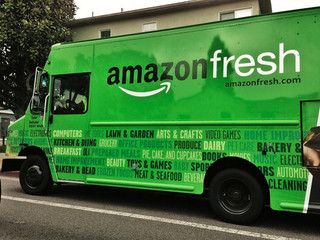Thirty Madison and Talkspace join forces to expand mental health access for women
Talkspace will be the therapy partner for femtech brand Nurx and migraine treatment platform Cove
Read more...
One-hour grocery delivery sensation Instacart has been flourishing by doing the thing you hate: buying groceries. In my house, grocery day is the “we’re going to have a horrible day” day, and my toddler plans his tantrums accordingly.
Now, Instacart is announcing that it has raised $44 million in a Series B round of funding led by Andreessen Horowitz, with participation from existing investors Sequoia Capital, Khosla Ventures and Canaan Partners. Additionally, the round saw personal investments from Box CEO Aaron Levy and Y Combinator president Sam Altman. Because EVERYBODY hates grocery shopping.
The new round brings Instacart’s total to $54.8 million to date, including an $8.5 million Series A round raised in June 2013.
Founded in 2012, the company had vowed to be in 10 U.S. cities by the end of 2014, but it managed to reach that goal by May. It’s currently available in the San Francisco Bay Area, New York City, Chicago, Boston, Washington, D.C., Philadelphia and Los Angeles. The company now believes it will be in 17 cities by the end of the year. That fast-paced growth has been fueled by climbing revenue: the company’s revenue has shot up 15-fold in the last nine months alone.
It’s not hard to see how a company tackling a universally hated chore (or rather, I should put this in the First World Problems category: a universally hated First World chore) would thrive and flourish. The trick has always been finding a way to reduce costs so that it actually makes sense for consumers. Instacart does that by crowdsourcing its drivers and using actual grocery stores as its warehouses, thereby eliminating the need for inventory, storage, and full-time drivers.
This model means that Instacart not only saves money, but can also expand quickly, settling in a city in as little as two to three weeks instead of the standard six to nine months for those who rely on traditional infrastructure (cough Amazon).
“Mobile is enabling a new way to tackle digital grocery distribution through an execution that I refer to as 'People Marketplaces.' This is Instacart's approach, and we're betting it will be the winning play,” said Andreessen Horowitz partner Jeff Jordan, in a statement.
Instacart is killing AmazonFresh—which does rely on the traditional commerce infrastructure and therefore has been expanding at a markedly slower pace (it’s currently only available in Seattle and surrounding neighborhoods, the Bay Area, and Los Angeles).
But Instacart has taken a note from Amazon in setting up its Amazon Prime-like delivery subscription service, which costs just $99 a year and covers all orders of $35 or more.
The company plans to plow the new capital into expansion, improvements to the customer experience, investing in technology, experimenting with new delivery models.
Talkspace will be the therapy partner for femtech brand Nurx and migraine treatment platform Cove
Read more...Midi is currently on track to serve about 100,000 patients this year, up from about 30,000 in 2023
Read more...Wheel clinicians will be able to prescribe Owlet's BabySat, which monitors oxygen and heart rate
Read more...
